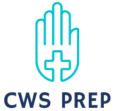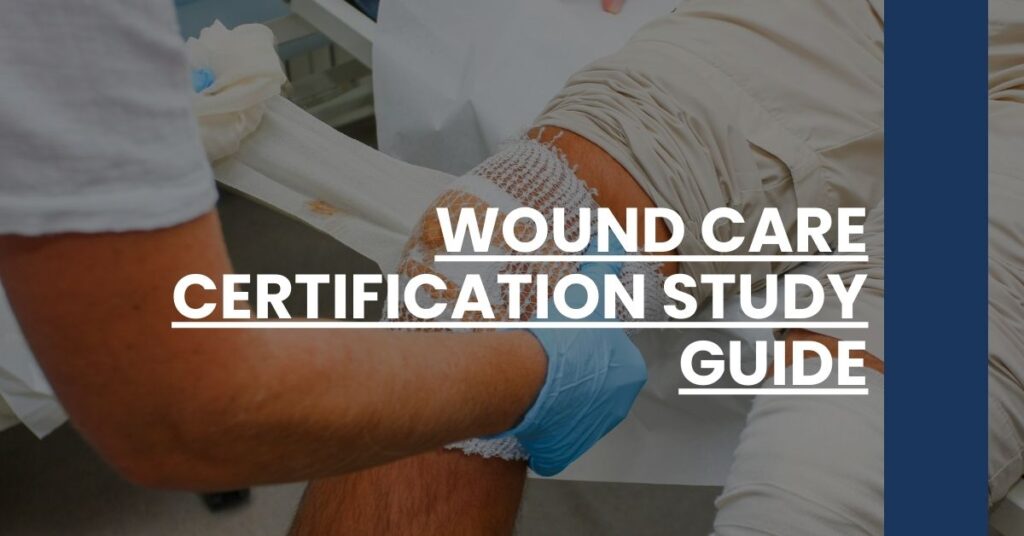Wound care certification study guide essentials are within reach, simplifying your exam preparation journey.
- Eligibility Criteria: Understand the prerequisites for sitting the wound care certification.
- Exam Overview: Familiarize yourself with the structure and content of the wound care certification exam.
- Study Resources: Discover the best materials to ace your wound care certification.
Accelerate your career with this wound care certification study guide.
- Understanding Wound Care Certification
- Eligibility Requirements for Wound Care Certification
- Overview of the Wound Care Certification Exam
- Study Materials and Resources
- Creating an Effective Study Plan
- Essential Topics in Wound Care
- Practice Exams and Questions
- Test-Taking Strategies and Tips
- After the Exam: What’s Next?
- Continuing Education in Wound Care
- Conclusion: Your Path to Wound Care Expertise
Understanding Wound Care Certification
Wound care certification signifies a specialized expertise in wound management, elevating the standard of care you can provide to patients with acute and chronic wounds. As a health professional, whether you’re a nurse, physician, or a physical therapist, this certification confirms your commitment to excellence and your proficiency in a complex field where advancements in treatment strategies are continuous.
Why Seek Certification?
- Enhanced Patient Outcomes: Certified wound care professionals use evidence-based practices that can lead to better recovery rates.
- Career Advancement: Certification may open doors to new job opportunities and recognition in the healthcare industry.
- Networking Possibilities: You’ll join a community of providers who are dedicated to high-quality wound care.
Reaching this milestone requires a blend of theoretical knowledge and practical experience. To start your journey, explore the benefits of wound care certification that extend beyond personal achievement, impacting patient care and the broader medical community.
Who Should Consider Certification?
If you’re engaged in any facet of wound care within the healthcare landscape or you see a window to specialize in wound management, this certification is meant for you. It’s not confined to one profession; a multi-disciplinary approach means that doctors, nurses, physical therapists, and other allied health professionals can seek certification.
Wound Care’s Role in Healthcare
Wound care is an essential, yet complex, part of healthcare, addressing a variety of wound types such as surgical incisions, pressure ulcers, diabetic foot ulcers, and traumatic wounds. Your expertise will play a crucial role in not only treatment but also in education, prevention, and research, contributing to a comprehensive patient care system.
Eligibility Requirements for Wound Care Certification
Your journey to becoming a certified wound care professional begins with eligibility. Some credentialing bodies have specific criteria you need to meet before you can sit for the exam. Generally, these include:
- A current professional license in your field of healthcare practice.
- Accredited education and sometimes, completion of an approved wound care program.
- Clinical experience in wound care, which varies depending on the certifying organization.
Meeting these criteria ensures that you have the necessary foundation to benefit from the certification. You can cross-check your qualifications with the requirements for WCC Certification Exam to ensure you’re on the right track.
Overview of the Wound Care Certification Exam
The certification exam tests your knowledge across a spectrum of wound care competencies. It’s a standardized assessment often comprising:
- Multiple-choice questions covering various scenarios and wound care principles.
- Case studies that require analytical and practical application of your knowledge.
- Simulation of wound care situations to assess your critical thinking skills.
The exam format can be intimidating, but a clear understanding of what to expect will aid significantly in your preparation. You can get a sense of the exam’s layout and content by reviewing resources like the Wound Care Certification Exam overview from Mometrix Academy.
Study Materials and Resources
Gathering the right study materials is paramount for your exam preparation. Consider utilizing a combination of the following resources to create a comprehensive study guide:
- Textbooks and Literature: These form the backbone of your study material, offering in-depth coverage of wound care principles.
- Online Courses: A variety of e-learning platforms offer courses tailored for wound care certification preparation.
- Practice Exams: To familiarize yourself with the format and types of questions on the certification exam.
An excellent place to start is the collection of how-to-prepare resources by the American Board of Wound Management, which includes a curated list of study guides, reference books, and sample questions.
Navigating Online Resources
There are ample online materials available; hence, choose resources that are reputable and align with the certification body’s recommended topics. You might find interactive modules, videos, webinars, and forums—not just formal courses—which can enrich your learning experience.
Creating an Effective Study Plan
Turning information into knowledge requires a smart plan. Here’s how you can create a strategy to conquer the wound care certification study guide:
- Assess and Allocate Time: Determine how many hours a week you can dedicate to studying and stick to it.
- Prioritize Topics: Identify areas where you’re less confident and allot more time to them.
- Blend Study Styles: Mix reading, practice questions, and interactive learning to keep the material engaging.
- Regular Reviews: Set aside time each week to revise subjects you’ve previously covered.
By following these steps, you ensure that your preparation covers all bases without becoming overwhelming. Remember, balance is crucial—cramming will only take you so far. Smart, consistent study is the way to success. For more tips on tailoring your study plan, consider referencing strategies outlined by health education platforms, such as Nurse.com’s guide to CE in wound care, which can offer insights into maintaining a steady educational rhythm.
Essential Topics in Wound Care
When embarking on your journey to wound care certification, recognizing and mastering essential topics is paramount. Think of this as your academic compass; it guides every aspect of your study and practice.
Wound Healing Physiology
Understanding the intricate processes of wound healing is the cornerstone of effective wound management. Your certification study guide should delve deep into:
- Phases of Wound Healing: Know the step-by-step progression from hemostasis to remodeling.
- Cellular and Molecular Components: Be adept at pinpointing the roles various cells and molecules play in repairing tissue.
- Factors Affecting Healing: Recognize systemic and local factors that can expedite or impede the healing process.
Infection Control and Management
The risks associated with wound infections are serious. Your study guide will equip you with strategies to:
- Identify Infection: Learn the clinical signs of wound infection, including local and systemic indicators.
- Implement Protocols: Understand how to apply standard precautions and advanced infection control measures.
- Choose Therapeutics: Gain insight into the selection of appropriate antimicrobial agents and dressings.
Patient Management and Education
Your role in patient care extends beyond immediate wound treatment. Equip yourself with knowledge on:
- Assessment Skills: Conduct comprehensive evaluations that inform effective treatment plans.
- Patient-Centered Communication: Enhance patient outcomes with clear instruction and education on self-care.
- Interdisciplinary Collaboration: Prepare to work within a team, integrating input from various specialties for optimal patient care.
In-depth familiarity with these topics will be your bedrock. For a more comprehensive list of topics, reference the Wound Care Management Course, which covers a breadth of subjects integral to certification.
Practice Exams and Questions
The adage “practice makes perfect” couldn’t be more relevant when it comes to preparing for your wound care certification exam. Taking sample tests will not only acclimate you to the question format but will also highlight areas where you may need additional study.
Advantage of Practice Tests
- Replicate Exam Conditions: Mimic the pressure of the real test to alleviate anxiety.
- Identify Knowledge Gaps: Pinpoint topics you need to revisit before the examination day.
- Boost Confidence: Familiarity with the exam structure will increase your self-assurance.
To effectively integrate practice exams into your study routine, seek out reputable sources like the how-to-prepare section provided by certification bodies, which often includes practice questions and even full practice exams.
Using Practice Questions Smartly
- Approach each question as you would in the actual exam.
- Review explanations for both correct and incorrect answers.
- Reflect on how certain questions relate to real-world wound care scenarios.
Test-Taking Strategies and Tips
Walking into your certification exam with a robust test-taking strategy is just as crucial as knowing wound care inside and out.
Before the Exam
- Study Holistically: Don’t focus solely on memorization; understand how concepts apply in practice.
- Manage Your Time: Keeping a steady pace avoids last-minute study marathons and learn with time for reflection.
During the Exam
- Carefully Read Questions: Look out for keywords and nuances.
- Answer Strategically: If unsure, eliminate obvious wrong choices and consider what’s left.
- Maintain Confidence: Trust in your preparation and don’t second-guess yourself unnecessarily.
To strengthen your test-day performance, incorporate advice from resources like Mometrix’s test preparation that offer insights into navigating the pressure of exam environments.
After the Exam: What’s Next?
Completing your exam is a monumental step, but your path doesn’t end there.
Receiving Your Results
Typically, you can expect results within a few weeks post-exam. Some organizations may provide instant preliminary scores.
Recertification and Maintenance
Certification renewal is commonly required every few years and involves:
- Continuing Education: Completing additional educational units to stay current in the field.
- Re-examination: In some cases, retaking the exam may be necessary.
Refer to your certifying body’s guidelines for specific after-exam protocols and embrace the ongoing journey of education in the dynamic field of wound care.
Continuing Education in Wound Care
The learning never stops, and with rapid advancements in wound care, it’s critical to keep up-to-date.
Importance of Lifelong Learning
- Stay Informed: Be the first to implement groundbreaking treatments and techniques.
- Expand Your Skill Set: Explore new subspecialties within wound care.
Resources for Continued Education
Periodically revisit the OnCourse Learning platform to discover recent CE courses or dive into specialized topics offered by Wound Care Education Institutes.
Conclusion: Your Path to Wound Care Expertise
Your pursuit of wound care certification is commendable—a testament to your dedication to patient care and professional development. By focusing on essential topics in wound care, regularly testing yourself with practice exams, and employing savvy test-taking strategies, you’re well on your way to becoming a certified wound care professional. Remember, this is more than just passing an exam; it’s about embedding a culture of continual learning and excellence in your everyday practice.
Armed with this wound care certification study guide, you are preparing to enhance not only your personal credentials but also the lives of the patients you serve. May each step in your study plan bring you closer to the expertise you seek, and may your passion for healing guide you through a successful certification journey.
Wound care certification study guide: Expert strategies, essential topics, and practice resources to ace your certification exam.

